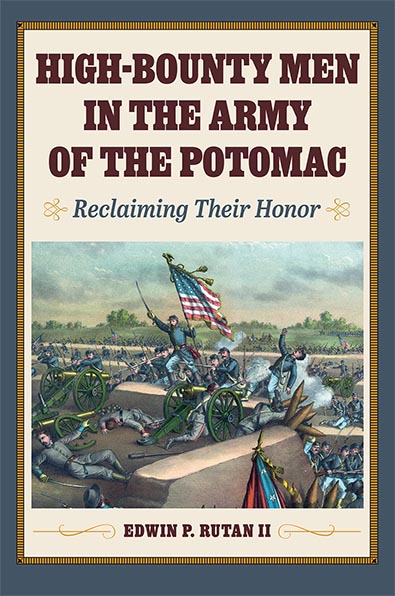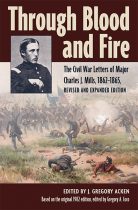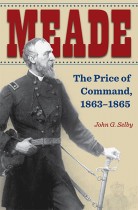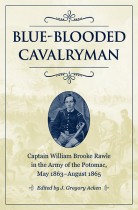High-Bounty Men in the Army of the Potomac
Reclaiming Their Honor
Civil War Era, Interpreting the Civil War: Texts and Contexts, Military HistoryEdwin P. Rutan II
For more than a century, historians have disparaged the men who joined the Union army in the later days of the Civil War—when higher bounty payments and the conditional draft were in effect—as unpatriotic mercenaries who made poor soldiers and contributed little to the Union victory. However, as Edwin P. Rutan II explains, historians have relied on the accounts of 1861 and 1862 veterans who resented these new recruits who had not yet suffered the hardships of war, and they were jealous of the higher bounties those recruits received. The result, he argues, is a long-standing mischaracterization of the service of 750,000 Union soldiers.
High-Bounty Men in the Army of the Potomac offers a much-needed correction to the historical record, providing a more balanced assessment of the “high-bounty” replacements in the Army of the Potomac. Rutan argues, using combat-effectiveness methodology, that they were generally competent soldiers and indispensable in defeating the Army of Northern Virginia. He also examines the issue of financial motivation, concluding that the volunteers of 1862 may have been more driven by economic incentives than once thought, and 1864 recruits were less driven by this than typically described. Thus, Rutan concludes that the Union “high-bounty” men do not deserve the scorn heaped on them by early volunteers and subsequent generations of historians.
More at: www.highbountymen.com
Edwin P. Rutan II is a retired lawyer who graduated from Harvard Law School. He is the author of “If I Have Got to Go and Fight, I Am Willing”: A Union Regiment Forged in the Petersburg Campaign: The 179th New York Volunteer Infantry 1864–1865.
“Not since Ulysses S. Grant penned his memoirs have the ‘high-bounty’ volunteers of the Army of the Potomac had such a defender as Edwin Rutan II. Using sophisticated statistical analysis, numerous first-person accounts, and new categories for rating ‘combat effectiveness,’ Rutan compels students of the Civil War to question long-held assumptions about the fighting value of the hundreds of thousands of men who carried the Union armies to victory in the last two years of the war.”—John G. Selby, author of Meade: The Price of Command, 1863–1865
***
“Through expert use of statistical data, blended with astute deployment of a variety of other sources of information, Edwin P. Rutan II convincingly offers us a brand-new interpretation of the men who joined the Union army during the last half of the Civil War. It is a positive and balanced portrayal of these ‘late-war’ soldiers that turns the traditional view of them on its head. His book also reflects importantly on unit effectiveness; the relationship between the central, state, and local governments in creating and maintaining the Union army; and the persistence of soldiers to endure campaign and battle in America’s worst war to date. This is a much-needed analysis of a vital cohort of troops who were instrumental in saving the Union in 1865, and it is a brilliant addition to Civil War soldier studies.”—Earl J. Hess, professor emeritus, Lincoln Memorial University
***
“For three decades now, progressively deeper research into the Civil War has been dismantling myths spawned by the participants themselves and perpetuated by historians whose portrayal of that epic saga tended more to soaring eloquence than scholarly examination. Combining a chronicler’s craft with a lawyer’s expertise in the evaluation of evidence, Ed Rutan has credibly quashed an indictment against late-war Union volunteers that originated in high-level excuse-making 160 years ago.”—William Marvel, author of Lincoln’s Mercenaries: Economic Motivation among Union Soldiers during the Civil War





